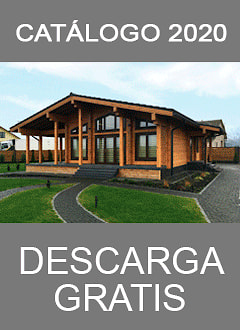≡ Catalogar
|
|
Wood main physical properties The main physical properties of wood include: color, luster, texture, macro-structure, odor, moisture, shrinkage, internal stresses, swelling, cracking, warping, density, sound - electro - thermal conductivity. Сolor, shine, texture and macrostructure determine the appearance of wood. The main physical properties of wood include: color, luster, texture, macro-structure, odor, moisture, shrinkage, internal stresses, swelling, cracking, warping, density, sound - electro - thermal conductivity. Сolor, shine, texture and macrostructure determine the appearance of wood. Wood of different breeds have different color - from white - aspen, spruce to black - ebony. Tannins, resin and pigments, founded in cells cavities, make wood more colourfull. Timber gloss - is the ability to reflect light beam pointedly. It depends on wood density, size and location of medullary rays, which reflect light rays pointedly, thereby creating the shine on the radial aspect. Beech wood, maple, oak, elm have the most characteristic luster. Aspen, poplar and linden has a matte surface due to a very narrow medullar rays, and thin cells walls. wood gloss surface is enhanced and preserved for long periods of time by creating transparent protective - decorative coatings. Texture - is a peculiar pattern formed by the medullary rays, fibers, and yearly layers of wood in different contexts. Texture saturation is determined by anatomical features of arboreous breeds structure and the section direction, and by the colour of early and late wood, rippling and by mixed up fibre arrangement. Macrostructure is characterized by the width of annual rings - the number of annual rings per 1 cm of segment, measured in the radial direction in cross section. Softwood have good physical - mechanical features when the number of layers varies from 3 to 25. The percentage of late wood in timber is determined by softwood samples. The higher late wood content in timber, the more the density and better mechanical wood characteristics. Essential oils, resins, tannins and other substances, founded in certain tree species, give them a smell Humidity - is the ratio of moisture mass in a given wood volume to the weight of absolutely dry wood, expressed as a percentage. Moisture, soaking the cell membrane, named the bound or hygroscopic, and moisture that fills the cavity of the cells and intercellular spaces, named free or capillary. During wood drying free water evaporates firstly and connected water - at the end of the drying process. The condition of timber, when cell walls contain the maximum amount of bound water, and only air fill the cavities, named the limit of hygroscopicity. There are the following stages of wood humidity: wet - humidity above 100%, freshly - humidity 50 - 100% air - dry humidity 15 - 20% dry - moisture 8 - 12% completely dry - humidity near 0%. Weight and electrical methods are used for humidity estimation. Using the weight method W,%, humidity is determined by the formula W = 100 (m1 - m2) / m2, where m1 - mass of the wood sample before drying; m2 - mass of the sample in an absolutely dry condition. Using electrical method, humidity is determined by electrical moisture gauge. First method advantage - is an accuracy, second - is a quickness. Shrinkage - is a reduction of linear measurements and wood volume during drying. Shrinkage occurs only during connected water evaporation. Shrinkage in the tangential direction is 6 - 10% in the radial 3 - 5% and along the grain 0.1 - 0.3%. Decrease of wood volume during connected water evaporation is called volumetric shrinkage. Full volumetric shrinkage of 12 - 15%. During bucking, allowances for shrinkage are forseen, because carving wood and procurements have to be of a given size. Internal stresses - are stresses in the wood - round carving wood and sawn timber without an application of external forces. Its reason - is an inequality of moisture distribution along section of drying wood. In majority of wood drying technologies, water evaporates firstly from surface wood layers. And if it will be less than hydroscopic limit, that is 30%, shrinkage is happening. At the same time internal layers remain more humid, and this makes the process of surface layers shrinkage more difficult. In the issue internal tension occurs in timber, aand this tension stretch the wood out in surface zones and squeeze in internal. When the wood humidity is decreasing out of the hydroscopic limit in internal zone, it will be also dry. In the issue traction tension in surface zone is decreasing, but not fully. Because of residual lengthening in surface layers normal shrinkage will be delayed. The process of technical drying in a vacuum infrared, in which these problems do not arise, is absolutely different. Residual internal stresses in the dried sawn timber could cause changes in linear dimensions and shape of parts during their machining. The presence of stresses in the wood set with the cutting of the boards power sections. If immediately after section manufacturing their cogs will remain parallel, there are no internal stresses in wood, if they will disperse, in the external layers - stretching, and in the interior - compressive stresses: if cogs sections will be brought together - in the outer layers of compression, and in the interior - the tensile stresses. Preserved after drying, the residual stresses could be removed through additional processing of sawn timber, wetting the surface with steam - or steaming water - spraying. Warping - is a change in the form of the cross section during drying or wetting wood. Warping could be transverse and longitudinal. Lateral buckling is expressed by changing the form of board sectoin. Its reason - is different shrinkage in the radial and tangential directions. Along the length sawn could warp, acquiring an arched shape or helical surface shape. During moistening and increasing of connected water content, wood swelling kakes place - an increase of linear dimensions and volume of timber. Sound conductivity - is a material property to conduct sound. It is characterized by the speed of sound spreading in the material. Along the grain in the wood sound spreads at a speed of 5000 m / s in the radial direction - 2000 m / s, tangentially - 1500 m / sec. Sound conductivity of wood is different in longitudinal and transverse directions. This property of wood and its ability to resonate - to amplify sound without distortion tones is used in the manufacturing of musical instruments. The best material for them - spruce, fir, Caucasian and Siberian cedar. Electrical conductivity of wood is characterized by its resistance to the passage of electrical current. It depends on wood species, temperature, humidity and the grain of the wood. Electrical conductivity of dry wood is negligible, which allows to use it as an insulating material - a wall outlet plugs and switches. With an increase in humidity from 0 to 30% electrical resistance of wood falls in million times. The electrical resistance of wood along the grain in several times lower than across the grain. Thermal conductivity - is the ability of the material to store heat. Wood has low thermal conductivity, since it has a lot of voids filled with air. Therefore, the thermal conductivity of wood depends on its humidity: the less the moisture, the lower the thermal conductivity. Mechanical properties include strength, toughness, hardness, elasticity, plasticity, brittleness, raskalyvaemost, the ability of wood to hold metal fasteners, wear resistance. Durability - is the ability of wood to resist degradation (tension, compression, bending, shear, etc.) under the action of external forces. Dense wood is generally more durable. Strength decreases rapidly with the increasing wood moisture. Strength reduces rapidly if there are any defects in wood. Depending on the strength of the material allowable stressуы are established, to which material couls be exposed without integrity damages. The value of allowable stress is always much lower than the tensile strength, ie the lowest stress values at which a destruction of the material takes place. Heterogeneous fibrous wood structure stipulates its unequal in different directions relatively to fibers. It resists the action of forces, tensile or compressive component along the grain, and bending forces directed across the grain, much lower resistance to compression across the grain of wood and chipping along and across the fibers. Thus, resistance to chipping wood along the grain in 1,3.1,5 times greater than the resistance to chipping across the grain, and in a direction perpendicular to the fibers (end-window) - in 3.5 times greater. Impact strength - is the ability of wood to absorb the work without breaking. Hardness - is the feature of wood to resist the introduction of body of a certain form. The hardness of the end surface is higher tangential and radial hardness to 30% for hardwood and 40% for softwood. According to the degree of hardness all tree species could be divided into three groups: mild - mechanical strength 40 MPa or less (spruce, pine, cedar, fir, poplar, linden, aspen, alder); solid - mechanical hardness 40,1.80 MPa (larch, birch, beech, oak, elm, elm, elm, sycamore, maple, hazel, walnut, apple, ash) are very solid - mechanical strength over 80 MPa (locust, birch, steel, hornbeam, dogwood, boxwood, yew). Resilience - is the ability of timber to restore the original shape after the termination of the external forces. If these forces exceed a certain amount (the limit of elasticity), wood is either destroyed or changeits shape. Plasticity - is the feature of wood to change its original shape under the action of applied forces and keep a new form after termination of the force. Bending, stamping, etc are based on this feature. Decidous wood breeds are better come under the bending(oak, ash, etc.) and absent-mindedly - vascular. Conifers have low ability to bend. Wet wood has higher ability to bend than dry wood. Fragility - is the ability of wood to break down suddenly without significantly shape changing under the action of mechanical forces. Сleavability - is the ability of wood to break down along the grain during penetration a wedge-shaped body into it. Wedge or hatchet, embedded into the wood, moves fiber apart, bend them to different sides and separates one part of fiber from another, forming a crack that goes in front of the blade of the wedge. It is easy to break up all the conifers and from hardwoods - beech, aspen, basswood, oak. The ability of wood to hold metal fasteners - is a feature, explained by the wood elasticity. When hammering a nail fibers move apart partially, putting pressure on the lateral surface, causing the mutual friction, that keeps the nail in the wood. The resistance of wood to pulling of screws aproximately in 2 times greater than the resistance of pulling nails. The wear resistance of wood is characterized by the ability to resist wear and tear, ie, the destruction in the friction process. Planks wear and tear from the lateral surface more than from machined side. Wearand tear decreases with increasing hardness and density of wood. Wet wood wears out more quickly than dry. Severability - is a feature of wood to divide into parts of wood under the action of forces. machining of wood with the removal of chips is based on this feature - sawing, milling, turning, grinding, and without removing material - cutting materials on shears, punching, chopping or bundling of wood - wood for logs, wood chips on the needle-shaped shaving, a big chip on the micro - and fibrous. We speak english, russian and german:+375298-06-05-67 — WhatsApp, Viber, TelegramMira más:Puedes ver una reseña en video de la casa de madera "Casa Blanca" de madera laminada encolada Archiline Houses: Puede ver una revisión en video de la casa de madera "Mirage": If you want to buy wood main physical properties , you can:
More from section |
|
© 2025
ArchiLine Wooden Houses
114-49, Necrasov str., Minsk, Republic of Belarus, 220049
The site is powered by Nestorclub.com | |
 Good Wooden House since 2004
Good Wooden House since 2004














